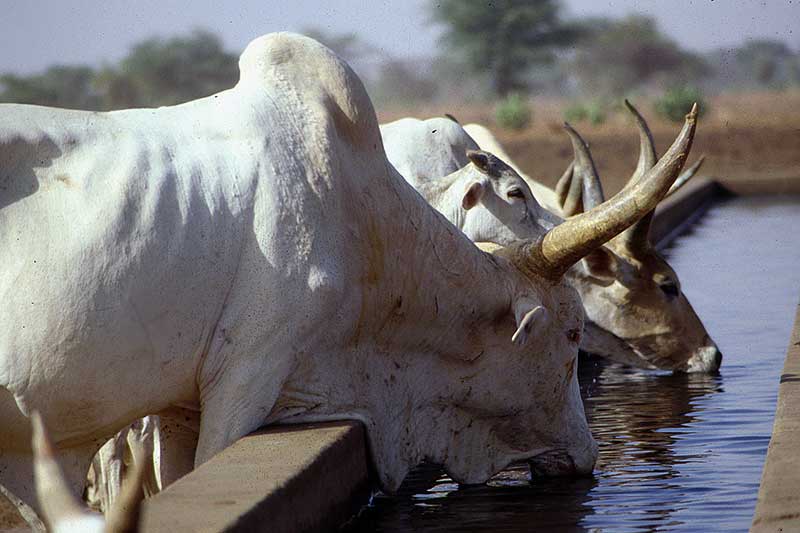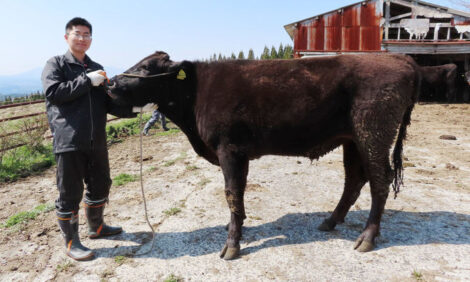



How to Develop Strategy Against Contagious Bovine Pleuropneumonia in Africa
Contagious Bovine Pleuropneumonia, formely under control, is once again a major threat to production across Africa, according to a report from the World Food and Agriculture Organisation.In the early 1970s, Contagious Bovine Pleuropneumonia (CBPP) appeared to be under control in Africa, write agricultural commentators at the World Food and Agriculture Organisation.
However, after almost 20 years of respite, there has been an alarming resurgence of the disease on the continent. Today CBBP is regarded as the most serious infectious animal disease affecting cattle in Africa and a major constraint to production.
The effect of the disease on beef, milk and crop production through the use of plough oxen is devastating, with particular implications for food security within countries affected by CBPP. The disease has contributed to great economic losses and therefore to increased poverty levels in many parts of Africa.
The Food and Agriculture Organization of the United Nations (FAO) Regional Office for Africa (RAF), in close coordination with the FAO's Animal Health Service (AGAH) and with the support of the regional office of the United States Department of Agriculture (USDA), organized a regional constitution.

The Ministry of Livestock and Animal Production of Regionally Coordinated Strategy for the Prevention and Control of Contagious Bovine Pleuropneumonia in Africaenegal hosted the consultation at FAO headquarters in Rome from 19 to 21 November 2013. It was organized under the umbrella of the Global Forum for the Control of Transboundary Animal Diseases (GF-TADs) in Africa and constituted a follow-up of previous consultations, with the last one being held in November 2006.
Directors and representatives of Veterinary Services from 12 countries attended the meeting in addition to representatives from the World Organisation for Animal Health (OIE) and FAO headquarters and FAO country offices from across Africa.
Other representatives were from CIRAD, the Central Veterinary Laboratory Mali (CVL/Mali), the Ecole Inter Etats de Sciences et Médecine Vétérinaires (EISMV), GALVmed, the Institut sénégalais des recherches agricoles (ISRA), the Inter African Bureau for Animal Resources of the African Union (AU/IBAR), the Pan-African Veterinary Vaccine Centre of the African Union (AU-PANVAC), the USDA regional office and livestock professional organizations.
The objectives of the regional consultation were to: (i) review current knowledge on disease prevention and control; (ii) provide an update on CBPP and control measures in the participating countries; and (iii) identify the key elements for a collective strategy for sustainable control of CBPP in Africa using the knowledge and experience of countries.
During two days of working sessions the participants reviewed the latest developments in CBPP diagnostics and prophylactic tools and discussed different prevention and control strategies in different epidemiological settings.
The participants debated the possibility to develop a progressive approach to CBPP control (similar to Foot-and-Mouth Disease Progressive Control Pathway) based on a realistic assessment of the disease’s impact and of the control options available.
Such a pathway would support countries in attaining higher levels of disease control in the vulnerable sectors. It would also guide them at a national level through achievable steps in the progression toward increased and sustainable disease control. The key elements for CBPP control were identified in three epidemiologically distinct regions (i.e. Sahel, coastal and east and south) taking into account technical, institutional and financial limitations.
The participants agreed on a number of recommendations, which focused on some of the below-mentioned areas: (i) harmonizing national and regional strategies for the progressive control of CBPP and for the coordination of actions at the subregional level; (ii) strengthening cross-border cooperation through animal health agreements between countries; (iii) mobilizing funding for research to develop vaccines, diagnostics and antibiotics; (iv) conducting economic studies on the impact of the disease and cost-benefit analyses of CBPP control programmes; (v) ensuring Regional Economic Communities embrace CBPP control initiatives in order to ensure sustainability; (vi) strengthening the capacity and governance of Veterinary Services using the Performance of Veterinary Services (PVS) tool; (vii) reinforcing capacity of veterinary and veterinary paraprofessionals through appropriate training and continuing education programmes; (viii) developing advocacy initiatives and documents on the socio-economic impact of the disease and benefits of its control; (ix) fostering public-private partnerships in the planning and implementation of animal disease policies and strategies; (x) lobbying national and regional decision-making bodies with action plans in order to request funds to manage CBPP; and (xi) seeking support and coordination from international (e.g. FAO and OIE) and African organizations (e.g. AU-IBAR and AU-PANVAC).
Following the regional consultation, FAO organized a cross-border meeting between the Veterinary Services of the Gambia, Guinea, Mali, Mauritania and Senegal under a Technical Cooperation Project entitled Emergency Assistance to Control CBPP Outbreak, which started in early 2013. The funds for this project were mobilized by FAO when CBPP re-emerged in the Gambia in 2012 after 41 years of absence. Directors and representatives of Veterinary Services from the five countries attended as well as participants representing FAO and USDA.
The objective of the meeting was to provide a platform for professionals and technicians to agree on coordinated strategies to monitor and control CBPP within the sub-region and to strengthen communication between Veterinary Services.
Discussions resulted in important commitments, including: (i) prioritizing the prevention and control of CBPP in their countries; (ii) harmonizing and adopting similar approaches to the containment of the current CBPP epidemic in countries within the sub-region; (iii) increasing vaccination coverage to reduce prevalence to levels where alternate strategies become applicable; (iv) ensuring the use of quality assured CBPP vaccines within the sub-region; (v) intensifying surveillance of CBPP to monitor the outbreaks and report new cases; and (vi) improving the management of cross-border livestock movements through measures including issuance of vaccination certificates and movement permits, identification of vaccinated cattle and notifying third parties about the ongoing efforts to control CBPP.


